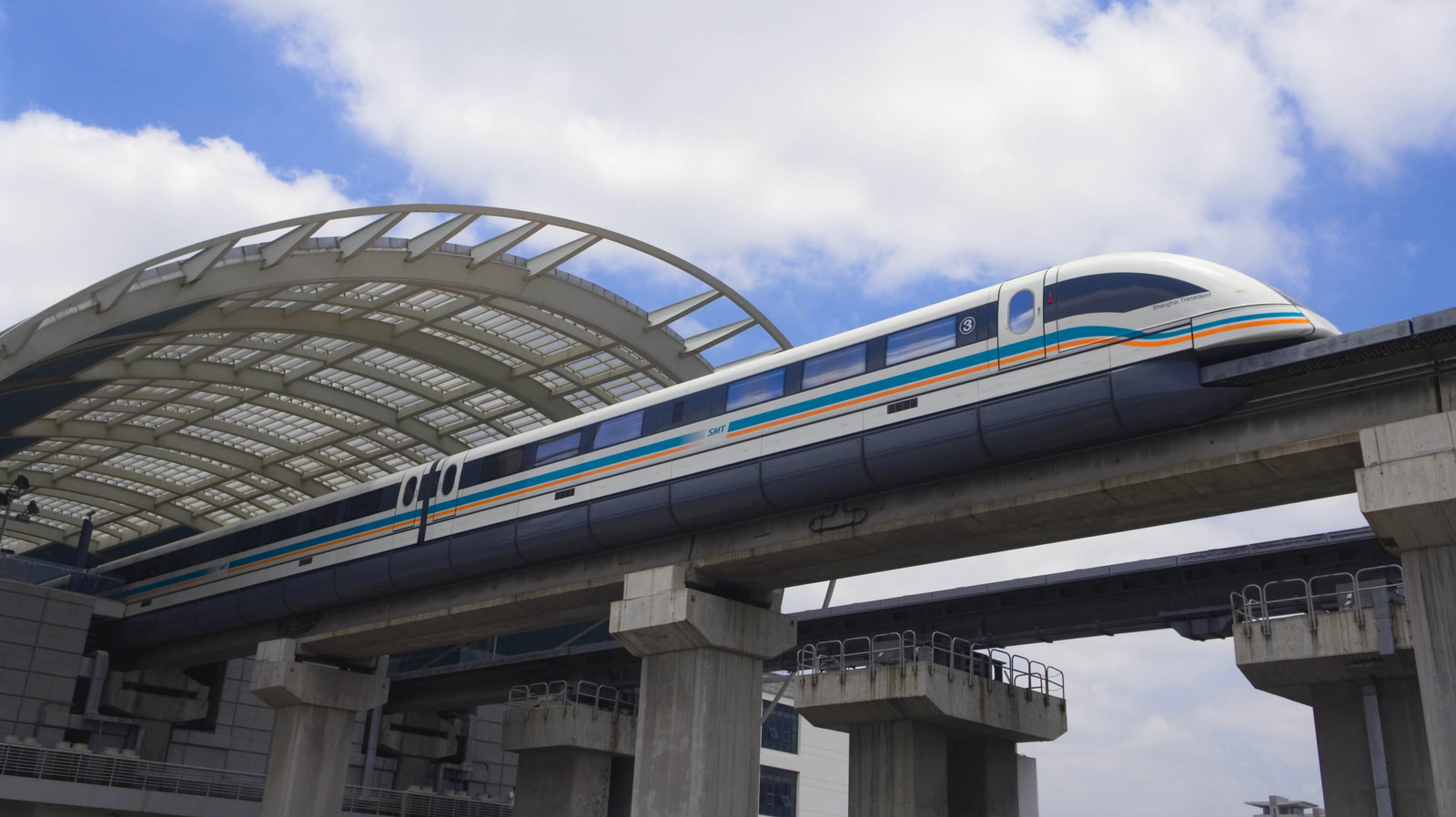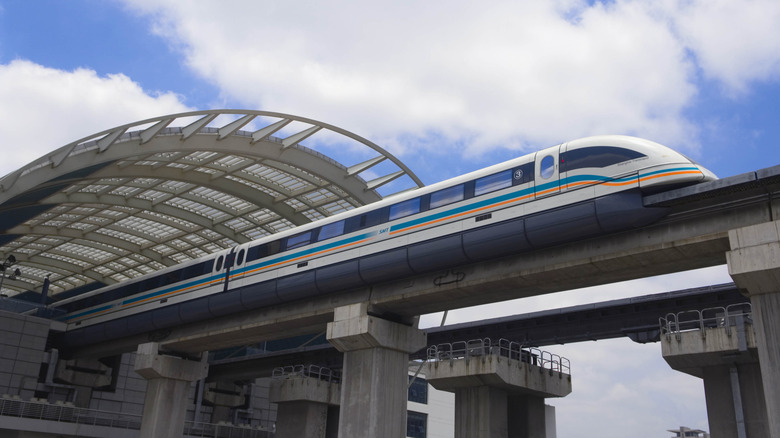A zero to 60 mph time of just under seven seconds is decent, but not too noteworthy. A zero to 100 mph in the same time would be astounding. But zero to 404 mph? Welcome to the future of trains, as Donghu Laboratory in China has just conducted a test of a new maglev that hit that speed in that time. Still not fast enough for you? Don’t worry, in a similar test last year, this prototype hit a final top speed of 620 mph. That makes this ground-based vehicle faster than commercial planes, which top out around 575 mph.
“Ground-based” might not be fully accurate in this instance, though. Maglev, short for magnetic levitation, is a technology in which actually floats a train in mid-air and then catapults it down a guideway. The concept has been around since the 1960s and was first put into commercial use in 2004, by China, no less. It has since been adopted in Japan and South Korea, too.
The decades-old Shanghai Maglev has a travel speed of 286 mph and a top speed of 311 mph. Older, conventional bullet trains are a little bit slower. So if this new maglev tech that China is developing pans out, it ought to be moving at anywhere from two to three times the fastest trains in the world today. Riding the train would be faster than flying, and a whole lot easier.
The attraction (and repulsion) of magnetic levitation
Essentially, maglev works by operating three separate magnetic systems simultaneously. One is the “tracks” of the guideway, creating the force to keep the train in mid-air above a certain speed (the train uses simple wheels below this speed). The second balances the train horizontally, keeping it “on the rails” without any physical connection.
The last is the most complex and is where those high speeds come from. Along the length of the train are a series of electromagnets that are cooled, usually with liquid helium, to a brisk -452 degrees F, or a typical winter’s day in Chicago. These superconducting magnets can produce ten times the magnetic field that they would at room temperature. That field interacts with electromagnets all along the guideway, which flip rapidly back and forth between north and south polarities, thereby attracting or repelling the passing train’s magnets to fling it along the route. In fact, because of this system, a maglev train doesn’t even have drivers: the computer-controlled magnets do all the work.
The major advantage here is that maglev trains don’t have to worry about friction along the ground, because it isn’t touching it. It’s free to just accelerate, with only wind resistance to keep it in check.
Meanwhile in America, we are still crawling our way to high-speed (which, at only around 200 mph, is quite slow-speed compared to China’s demonstration) rail between LA and Vegas. Good thing the LA to San Francisco bullet train is coming along quickly and completely within the original budget… oh. Oh wait. Oh no.




